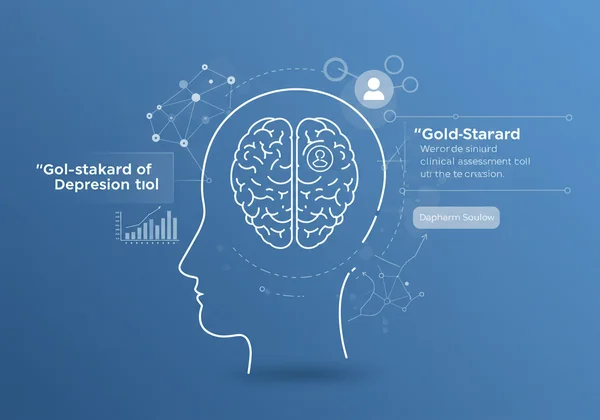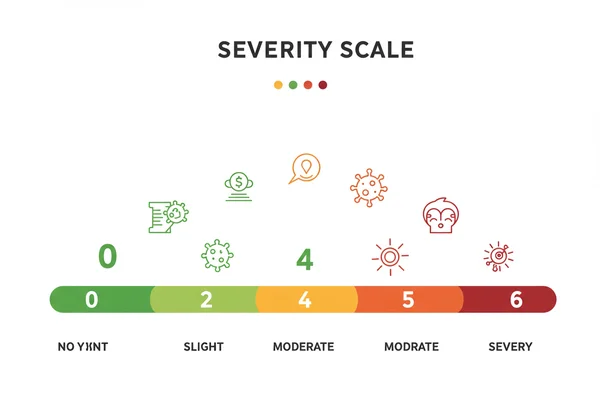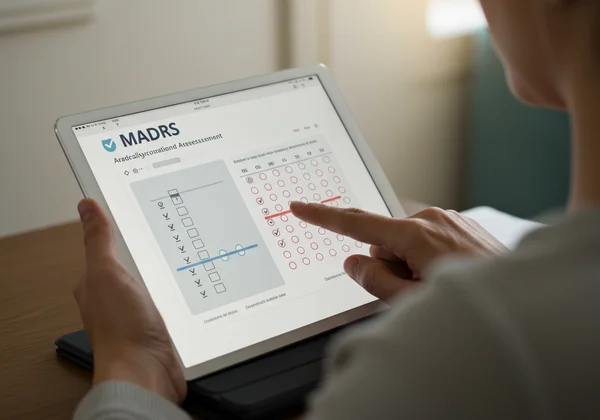MADRS Questions: A Symptom-by-Symptom Scoring Guide
Understanding depression is a profound challenge, as its symptoms are often complex and deeply personal. For clinicians, researchers, and individuals seeking clarity, having a structured tool is invaluable. The MADRS (Montgomery-Åsberg Depression Rating Scale) is that gold-standard instrument, but what are the 10 questions on the MADRS that make it so effective? This guide will provide a detailed, item-by-item breakdown of the MADRS questions and their scoring, empowering you with the knowledge to understand this powerful assessment.

The MADRS scale is more than just a questionnaire; it's a nuanced framework designed to measure the severity of depressive episodes with clinical precision. This article will walk you through each of the ten symptoms it evaluates, explaining what clinicians look for and how severity is graded. Whether you are a healthcare professional, a student of psychology, or someone looking to better understand their own mental health, this guide will illuminate the path. To see how these principles apply in practice, you can take our MADRS test at any time.
Decoding the MADRS: The Foundation of Depression Assessment
The MADRS Scale was developed to be particularly sensitive to changes in depression symptoms, making it an excellent tool for monitoring treatment efficacy. Its strength lies in its semi-structured interview format, which allows for a more holistic evaluation than a simple self-report checklist. It focuses on the core psychological and somatic symptoms of depression.
Why Each Question Matters: Precision in Symptom Identification
Each of the ten questions on the MADRS targets a specific domain of depression. This granularity prevents a vague or generalized assessment, forcing a closer look at distinct aspects of the illness, from emotional states like sadness to physical symptoms like sleep disturbance. This precision in symptom identification helps create a detailed clinical picture, which is crucial for tailoring effective treatment plans and tracking progress over time. Understanding each component allows for a more accurate interpretation of the final score.
The Scoring Philosophy: Understanding Severity Levels (0-6)
At the heart of the MADRS is its scoring system. Each of the ten items is rated on a 7-point scale, from 0 to 6, where higher scores indicate greater severity. This scale is not just about ticking boxes; it requires a nuanced judgment of the symptom's intensity, duration, and impact on the individual's functioning.
- 0: No symptom present.
- 2: Slight or trivial symptom.
- 4: Moderate symptom.
- 6: Severe or incapacitating symptom.
The points in between (1, 3, 5) allow for finer distinctions. Mastering this scoring philosophy is key to using the MADRS accurately, a process simplified by using a standardized free MADRS assessment like ours.

Detailed MADRS Questions & Scoring Guide: Item by Item
Here we dive into the core of the MADRS assessment: the ten questions. We'll explore what each item assesses and the nuances involved in its scoring.
Item 1: Apparent Sadness & Observable Emotional State
This item evaluates sadness that is visible to the observer. It's about the non-verbal cues of despondency. The interviewer assesses the individual's facial expression, posture, and tendency to weep. Scoring considers how much of the time these signs are present and their intensity, from appearing slightly downcast to looking miserable and distressed continuously.
Item 2: Reported Sadness & Subjective Experience
Unlike the first item, this question focuses on the individual's internal, subjective feeling of sadness. It explores their self-reported experience of low spirits, despondency, and hopelessness. Scoring depends on the pervasiveness of these feelings—whether they can be shaken off or are present constantly—and their depth, from fleeting feelings of sadness to a continuous and profound sense of gloom.

Item 3: Inner Tension & Anxiety Symptoms
This item measures feelings of inner turmoil, restlessness, and ill-defined dread. It's the gnawing feeling of anxiety that often accompanies depression. The scoring reflects the severity, from a slight sense of unease to a constant state of agitation and panic that is distressing and overwhelming. A reliable MADRS online test can help quantify this often-elusive symptom.
Item 4: Reduced Sleep & Sleep Disturbance Patterns
Sleep quality is a critical indicator of mental well-being. This question assesses any reduction in sleep duration or depth compared to the individual's normal pattern. It considers difficulty falling asleep, waking during the night, and early morning awakenings. A score of 6 would represent someone getting less than two or three hours of sleep per night.
Item 5: Reduced Appetite & Weight Changes
This item evaluates changes in appetite. Depression can significantly diminish the desire for food, leading to noticeable weight loss. The score is based on the individual's self-report, from feeling they have to force themselves to eat to having virtually no appetite at all. The highest scores are reserved for cases where significant weight loss has occurred.
Item 6: Concentration Difficulties & Cognitive Impairment
Cognitive symptoms are a hallmark of depression. This question assesses difficulties with focus, memory, and decision-making. At lower levels, a person might report occasional trouble concentrating on a book or task. At higher levels, they may be unable to follow a simple conversation or make everyday decisions, reflecting significant cognitive impairment.
Item 7: Lassitude & Energy Loss
Lassitude refers to a state of mental and physical weariness and a lack of energy to initiate or complete tasks. This item measures the impact of fatigue on daily life. Scoring ranges from a slight feeling of tiredness to a state of near-total exhaustion where even minor tasks feel like an insurmountable effort. This symptom is a key part of the MADRS for depression assessment.
Item 8: Inability to Feel & Anhedonia in Depression
This question explores anhedonia—the reduced ability to experience pleasure or emotional engagement. It assesses the loss of interest in activities that were once enjoyable, as well as a blunted capacity to feel emotions like joy, anger, or even sadness for others. In its most severe form, individuals report a painful and complete emotional numbness.
Item 9: Pessimistic Thoughts & Hopelessness
This item focuses on the cognitive content of depression, specifically thoughts of guilt, self-reproach, worthlessness, and a bleak outlook on the future. The scoring considers the frequency and intensity of these thoughts. It ranges from occasional self-doubt to pervasive feelings of failure and delusional beliefs about personal ruin or sin.
Item 10: Suicidal Thoughts & Clinical Safety Considerations
This is the most critical item, assessing thoughts of self-harm. It ranges from feeling that life is not worth living to making active plans for suicide. Any score above 0 on this item requires careful clinical attention. A score of 6 indicates explicit suicidal plans or a recent attempt, highlighting the need for immediate intervention. If you are experiencing such thoughts, please seek immediate help from a healthcare professional or a crisis hotline. This tool is for assessment, not a substitute for professional care.
Empowering Accurate Assessment with MADRS Insights
Understanding each of the ten MADRS questions in detail transforms the scale from a simple number into a rich clinical narrative. It allows for a more precise, empathetic, and effective approach to assessing and monitoring depression. By appreciating the nuances of each item, both clinicians and individuals can gain deeper insights into the specific challenges they face.
Ready to apply this knowledge? The best way to see how these symptoms come together is to use a reliable tool. We invite you to take the free MADRS assessment on our homepage to get an instant, confidential score. For those seeking deeper understanding, our unique AI-powered report can provide personalized insights into your results, turning your score into actionable knowledge.

Frequently Asked Questions About the MADRS Scale
What are the 10 questions on the MADRS scale?
The MADRS scale evaluates ten core symptoms of depression: Apparent Sadness, Reported Sadness, Inner Tension, Reduced Sleep, Reduced Appetite, Concentration Difficulties, Lassitude (fatigue), Inability to Feel (anhedonia), Pessimistic Thoughts, and Suicidal Thoughts. Our online guide breaks down each of these in detail.
How do you interpret MADRS scores in clinical practice?
MADRS scores provide a quantitative measure of depression severity. Generally accepted ranges are: 0-6 (symptom-free), 7-19 (mild depression), 20-34 (moderate depression), and >34 (severe depression). Clinicians use the score to establish a baseline, monitor treatment response, and inform clinical decisions. You can get a preliminary score by taking our MADRS Test.
Is the MADRS online test free to use on our platform?
Yes, our MADRS online test is completely free to use. You can answer the ten questions and receive your score instantly without any charge or obligation. We also offer an optional, in-depth AI-powered analysis for a comprehensive report.
Can I use the MADRS for personal self-assessment of depression?
While the MADRS is a clinical tool, it can be a valuable resource for personal self-assessment to better understand and track your symptoms. However, it is not a diagnostic tool. Any results should be discussed with a qualified healthcare professional who can provide a proper diagnosis and treatment plan. Use our MADRS selfreport tool as a starting point for that conversation.
How accurate is the MADRS scale for depression assessment?
The MADRS is considered a "gold standard" in clinical research and practice due to its high reliability and validity. It is particularly sensitive to changes in symptom severity over time, making it highly accurate for monitoring the effectiveness of treatment for depression.